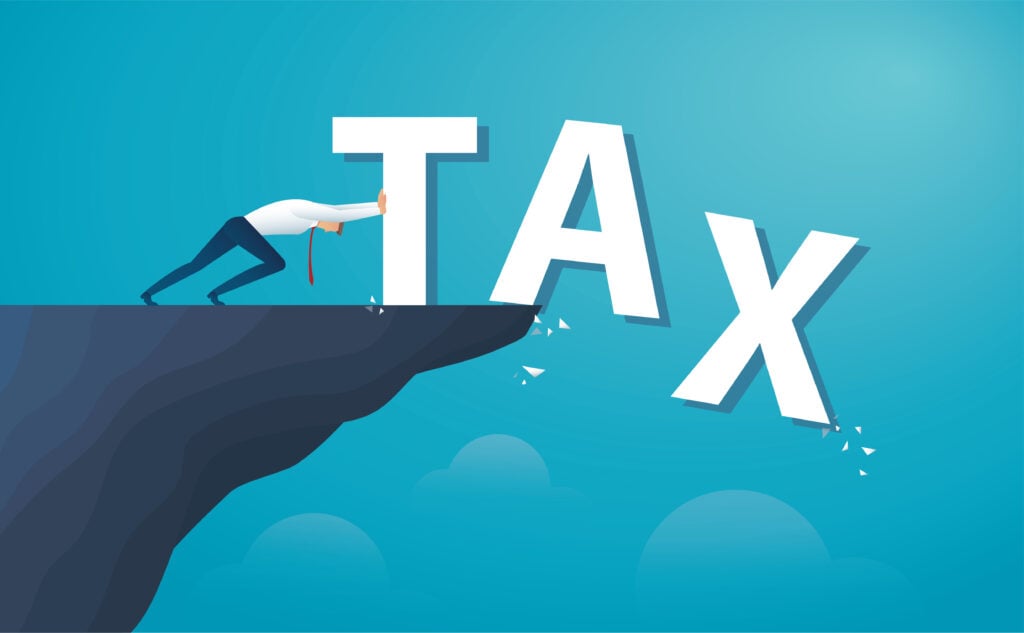This blog is co-authored by Joe Hughes and Jon Whiten
The Inflation Reduction Act signed into law by President Biden on August 16 is the most substantial corporate tax reform in decades. With four major tax policy provisions, it takes a huge step toward a fairer tax code and a more equitable economy. But as always, there are more steps lawmakers should take to build on this progress.
Four Tax Policy Wins in the IRA
1. Corporate Minimum Tax
In a victory against corporate tax avoidance, corporations with average profits of more than $1 billion over the previous three years will be required to pay taxes of at least 15 percent of their worldwide “book” profits. This will raise $223 billion over a decade. Book profits are the profits that corporations make public for shareholders and potential investors and are sometimes much larger than the profits they report to the IRS for tax purposes. If the total taxes (US and foreign) paid comes to less than 15 percent of those profits, this provision would require them to pay additional tax to raise their effective worldwide tax rate to 15 percent. Before passing the IRA, the Senate carved some exceptions into the minimum tax. But this provision will nonetheless mean fewer big profitable corporations will get away with paying nothing or almost nothing in taxes.
2. Increased Funding for Tax Enforcement
The IRA will provide $80 billion in additional funding for the IRS which will result in $204 billion in additional revenue collections over a decade. (The Treasury Department concludes that the real revenue impact would likely be $400 billion over a decade.) The new funding will reverse a decade of cuts to the IRS budget that have left the agency with fewer staff to answer calls and fewer auditors than at any time since World War II. The agency has been unable to help law-abiding taxpayers and unable to catch tax cheats. These cuts have caused the agency to dramatically reduce audits of wealthy individuals and large corporations and increase audits that are easier to perform—which are audits on people who are poor. Both the IRS commissioner and the Treasury Secretary have pledged that those with income of less than $400,000 would not be targeted for increased audits.
3. Stock Buyback Tax
The IRA’s stock buyback tax will raise $74 billion over a decade by ensuring that income transferred from corporations to wealthy shareholders does not continue to escape taxation. Corporations will pay a 1 percent excise tax when they purchase their own stock from shareholders, reducing – but not eliminating – the tax advantages for stock buybacks. Stock dividends and stock buybacks are both ways that corporations can pay profits to shareholders, but for most shareholders only dividends are taxed under current law. Shareholders pay income tax on dividends in the year they receive them. Stock buybacks, on the other hand, result in capital gains in the year of the buyback only for taxpayers who sell their stock back to the corporation; but all other shareholders also have a capital gain (because stock buybacks increase the value of the corporation’s remaining outstanding stock) that may not be taxed for years – and in many cases will never be taxed at all. The IRA’s stock buyback tax removes some of the tax incentive for corporations to increase the profits paid to their shareholders, which benefits investors and also executives whose compensation is based on the corporation’s stock price, rather than using those profits to invest in new plant and equipment (boosting productivity and output) or to increase the compensation of workers (without whom corporations would have no profits at all).
4. Extension of Limit on Deductions for Business Losses
The IRA extends rules that prevent high-income taxpayers from deducting business losses that exist only on paper to reduce the other income they report to the IRS. Under rules enacted as part of the Tax Cuts and Jobs Act, when business owners report losses, they cannot use these losses to offset more than $250,000 of their non-business income (or $500,000 of non-business income in the case of married couples). This limit on pass-through losses was set to expire after 2025. The American Rescue Plan Act extended it for one year, through 2026, and the IRA would extend it for another two years, raising $52 billion over that time.
Four Tax Policy Changes That Can Build on This Progress
1. Tax Income from Wealth the Same as Income from Work
President Biden has proposed several reforms to sharply limit the breaks that cause our tax system to tax income from wealth less than income from work, at least for the very rich.
First, current tax rules do not tax asset appreciation until an individual sells an asset and “realizes” the profit on the asset sale as a capital gain. The Billionaires’ Minimum Income Tax introduced in the House this summer would limit this break on those with more than $100 million of income.
Second, if an individual dies and transfers an asset to heirs, the unrealized capital gain, which can be a significant amount of untaxed income, is exempt forever from the income tax. The president’s proposal would tax unrealized gains as taxable income for the final year of a taxpayer’s life, but generous exemptions would apply.
Third, on the occasion when capital gains are “realized” as the profit on an asset sale, they are taxed at much lower rates than apply to other types of income. The president proposes to limit this break, but only for millionaires. Taxable income beyond $1 million would be subject to the top “ordinary” personal income tax rate regardless of whether it is capital gains, dividends or any other type of income.
Together, this package of reforms would raise about half a trillion dollars over a decade and would render obsolete many schemes used by the wealthy, including the carried interest loophole, to make their income qualify for these tax breaks.
2. Implement an International Corporate Minimum Tax
While the IRA’s minimum corporate tax ensures that the very biggest companies pay at least 15 percent of their worldwide profits in taxes, a stricter minimum tax would ensure that companies pay a tax rate of at least 15 percent in each country where they do business. This would prevent them from using accounting gimmicks to shift profits to offshore tax havens. This stricter 15 percent minimum tax on offshore profits is the cornerstone of the international tax deal that the Biden administration brokered with most of the worlds’ leading governments, which together account for about 95 percent of global economic output.
This reform was included in the Build Back Better Act which passed the House of Representatives in November but was left out of the Inflation Reduction Act, meaning the U.S. has not implemented the international deal it brokered. Under terms of that deal, other governments that do implement it could increase taxes on companies based in countries that are not complying – which, right now, means American corporations. It is in everyone’s interest for the U.S. to enact this minimum tax to prevent corporations from avoiding taxes by claiming that their profits are earned in tax havens.
3. Reinstate the Expanded Child Tax Credit
Lawmakers should reinstate the expanded Child Tax Credit that was on the books in 2021 as part of the American Rescue Plan. That CTC expansion is estimated to have lowered the number of children living in poverty by 40 percent. It increased the credit per child to $3,000 for children 6 and up and to $3,600 for children under 6. It also made the credit fully refundable so families with low incomes would not be left out and provided the credit in monthly installments to match the monthly expenses of most families – rather than as an annual lump sum.
The House of Representatives voted to make these changes permanent in November 2021 as part of the Build Back Better Act, but this provision was not taken up by the Senate. Some Senators cited concerns about inflation, but any inflationary effect of the credit could have been reversed through tax increases on the ultrawealthy. Most importantly, the expanded credit would have helped many low- and middle-income families adapt to higher costs of groceries, housing, and childcare.
4. Repeal or Limit Trump’s Tax Break for Business Profits
One of the biggest tax cuts in President Trump’s 2017 tax law was a 20 percent deduction for profits from “pass-through” businesses whose profits are not subject to the corporate tax but instead pass through to the owners’ personal income tax returns. Most of this income is generated by very large pass-through businesses and most of the benefits of these tax breaks flow to the richest taxpayers, in contrast to claims of proponents. In fact, in 2019 88 percent of the benefits of this tax break went to the richest 20 percent of Americans – and half went to the richest 1 percent, according to the Congressional Budget Office. Like many provisions in the 2017 law, this one expires at the end of 2025, but lawmakers will try to extend it or make it permanent.






